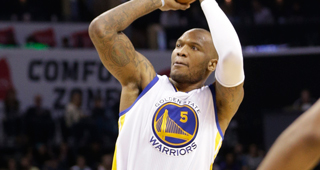Article VII Of the Collective Bargaining Agreement covers contract options.
Differences between Options and Guarantees:
The end of a League Year (between the end of the season that just completed and July 1st), generates plenty of discussion surrounding Options. In many cases, the terms Team Option and Non-Guaranteed contracts are used interchangeably but this is not actually the case. The below will hopefully clear up any misconceptions about Options and Guarantees.
Types of Options:
There are three types of Options that can be applied in a Contract. They are Team, Player and Early Termination. With one notable exception (covered below), a Contract can contain only one Option year.
Team Options: Team Options (or TOs) are in control of the team to exercise or not. Team Options must be exercised by 6/30 of the concluding League Year. Teams must notify the league if they are exercising a Team Option but do not if they are not exercising it. When a team exercises a TO, it is commonly referred to as “picking up player X’s option” and when a team chooses not to exercise a TO, it is commonly referred to “declining player X’s option”.
A recent example of a Team Option was the Golden State Warriors and Marreese Speights for the 15-16 season. The Warriors chose to exercise their Team Option on Speights, thus putting him under contract for 15-16 at the previously agreed to amount.
One other quirk of Team Options is that a TO can be exercised to pick up a Partially or Non-Guaranteed contract for a player. A recent example of this is the Houston Rockets and Kostas Papanikolaou. The Rockets chose to exercise their Team Option on Papanikolaou for the 2015-2016 though this season is Non-Guaranteed until October 4th. Partial and Non-Guaranteed contracts will be covered in depth below.
Team Options on Rookie Scale Contracts:
The notable exception mentioned above applies to Team Options in Rookie Scale contracts. Each Rookie Scale contract is fully guaranteed for the first two seasons while the third and fourth are Team Options. Unlike standard Team Options, Team Options in Rookie Scale contracts have different dates upon which they must be exercised. By October 31st of each year, teams must decide if they choose to exercise their Team Option for the season after the upcoming one. For example, by October 31st, 2015 teams must decide if they want to exercise their Team Options for the 16-17 season.
Player Options: Player Options (or POs) give players the decision of whether to exercise or not. Like most Team Options, Player Options must be exercised by June 30th of the ending League Year and players only have to notify the League that they are exercising a Player Option. When a player exercises a PO, it is commonly referred to as “opting in” and when they choose not to exercise a PO, it is commonly referred to as “opting out.”
A recent example of a Player Option was Roy Hibbert. In June, Hibbert chose to exercise his Player Option, thus putting him under contract for 15-16 at the previously agreed to amount.
Early Termination Option: Early Termination Options (or ETOs) give player the control of whether to exercise or not but are in many ways the reverse of a Player Option. For ETOs, the player must notify the league that they are exercising an ETO and becoming a free agent. An ETO can only be included in a five year contract and must be the final year of the contract. When a player exercises an ETO, it is commonly referred to as “opting out” and when they choose not to exercise one, it is commonly referred to as “opting in”.
A recent example of an Early Termination Option was Thaddeus Young, who chose to exercise his ETO to become an Unrestricted Free Agent.
There are some rules that apply to both Team and Player Option and Early Termination Options:
- Each contract (other than Rookie Scale contracts) can only contain one option year total and it must be the final year of the contract.
- The salary for either a Player or Team Option season cannot be lower than the player’s salary the preceding year. However, an ETO year can have a lower salary than the prior season.
- When determining the amount of a Trade Bonus (commonly referred to as a Trade Kicker), non-exercised option years are not counted in the calculation while ETO seasons are.
- Roy Hibbert serves as a worthwhile example here. He was traded to the Lakers after exercising his Player Option so he was eligible to receive his trade kicker.
- A contract with a Player Option is eligible to be extended when the Option is not exercised (the player “opts out”) while a contract with an ETO is not eligible to be extended if the ETO is exercised (the player “opts out”).
- All contracts contain clauses on what happens to the salary amount for any Option or ETO years if the player is waived and clears waivers.
- In addition, despite the above stating that all Options or ETOs must be exercised by June 30th at the latest, contracts may contain language stating that they must be exercised at an earlier date.
- There is no such thing as a “conditional” option. Meaning, you cannot have an Option year that is automatically exercised if a player appears in X amount of games or he achieves a certain statistical milestone. “Conditional” options can, in effect, be achieved through Partial or Non-Guaranteed contracts.
- Once exercised, an Option year or ETO cannot be revoked, meaning a player or team cannot change their mind and decide to not exercise the Option/ETO.
- In all cases, if a player becomes a Free Agent by an Option or ETO being or not being exercised, the team retains a Cap Hold for that player until the player is renounced, re-signed or signs elsewhere in the NBA.
Partial and Non-Guaranteed Contracts:
Often Non-Guaranteed contracts and Team Option are treated as one and the same but this is not the case. Some notable rules and differences between Partial/Non-Guaranteed and Team Options:
- While a contract may contain only one Option year (again with the exception of Rookie Scale contracts), it can include several partial or non-guaranteed years.
- A contract can be guaranteed for any amount from none up to the fully guaranteed amount of the contract.
- The non-guaranteed years of a contract can have language around when a contract becomes partially or fully guaranteed. A Team Option year is always fully guaranteed upon being exercised with the exception of a Team Option year that becomes a partially or non-guaranteed. All contracts become fully guaranteed as of 1/10 of each season.
- In the case of a sign-and-trade, the contract must be for at least three years in length. However, only the first year must be fully guaranteed. All subsequent years can be partially or non-guaranteed.
- The Nets famously used this structure to include Keith Bogans in the trade for Kevin Garnett and Paul Pierce. His contract was guaranteed for the first season and non-guaranteed for the second and third seasons.
- Salaries in a partial or non-guaranteed contract can decrease from year to year while a Team Option salary must always be equal to or greater than the preceding season.
- Players with partial or non-guaranteed contracts can be traded at any time from the end of their team’s season to the start of the Moratorium while a player with Team Option cannot be traded unless and until the option is exercised.
- When a Team Option is not exercised, the player immediately becomes a Free Agent when the league year turns over (typically July 1st). When a team decides they no longer want a player on a partial/non-guaranteed contract, they must waive that player who is then subject to being claimed by another team in the waiver process.
- When a Team Option is not exercised, the team is under no financial obligation to the player from that contract. When a partial/non-guaranteed player is waived, the team is responsible for any salary already paid to the player (assuming it is in season) or any partially guaranteed amount stipulated in the contract, whichever is greater.
A major difference between the two is that a player with a non-guaranteed contract is often a much more desirable trade chip. Take, for example. Brendan Haywood for the 15-16 season. Haywood has a non-guaranteed contract worth a little over $10.5 million with an August 1st guarantee date. The Cavaliers, who Haywood plays for as of this writing, are able to trade Haywood in take back a considerable salary in return while using the trade rules that apply to players rather than trade exceptions. The team acquiring Haywood could then waive Haywood with no financial obligation of cap impact.
If Haywood’s contract contained a Team Option for 15-16 (like Lakers had with Jordan Hill), the Cavaliers would have had to exercise that option by June 30th so the additional flexibility would not have carried over to the new league year.
Another example of this came when the Milwaukee Bucks traded Ersan Ilyasova for the to the Detroit Pistons for the non-guaranteed contracts of Caron Butler and Shawne Williams. The Bucks were then able to waive Butler and Williams without taking any sort of hit on their Cap. Had the Bucks simply waived Ilyasova, they would have been responsible for the full amount of his guaranteed salary on their Cap. Also, this trade took place on June 11th, 2015 as part of the 14-15 season. Had Butler or Williams been coming up to a Team Option year versus Non-Guaranteed years, they would have been ineligible to be traded because player who has the option to become a Free Agent cannot be traded during the time between the end of a team’s season and the start of the July Moratorium.
Partial and non-guaranteed contracts are becoming a popular way for teams to take a chance on a player without locking themselves into that player. Often, undrafted players are signed in to the league on a partially guaranteed contract. This gives them, in effect, a signing bonus to attend camp and play in the pre-season with a team. The team can then try the player out and make a decision at a later date on keeping that player or not.
In addition, more and more veteran players are signing non-guaranteed contracts. Teams may not be willing to lock in to an older player but a non-guaranteed contract will allow the team to see what the player has left without locking in to that player for the year. It is a system that allows both young players and veterans to have a chance to prove that they can play or can still play, without the team taking a major risk.



